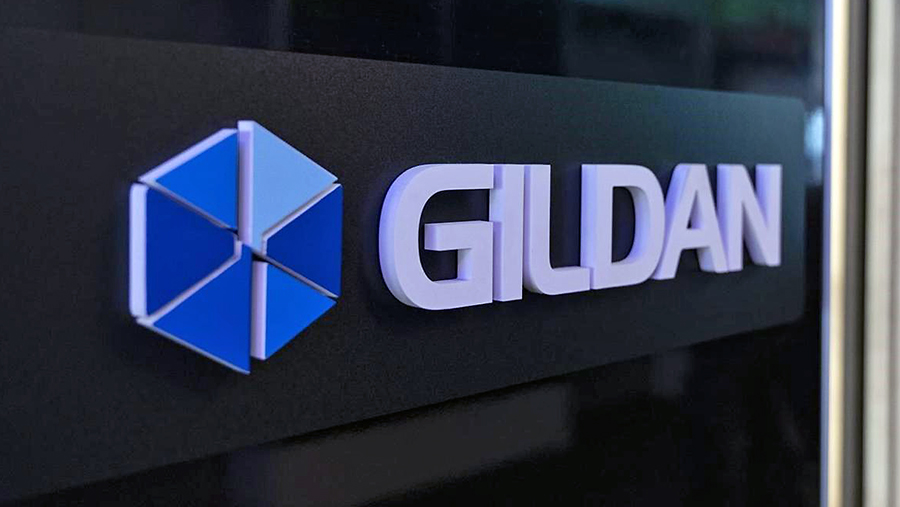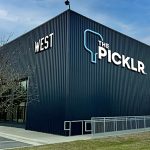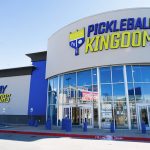Gildan Activewear Inc.’s third-quarter sales grew 2.4 percent, slightly ahead of guidance, as a 6 percent gain in activewear sales offset an 18 percent slump in its hosiery and underwear sales tied to its phase-out of its Under Armour sock license. Earnings rose 15 percent on improved margins.
Gildan raised its revenue guidance for the year and narrowed its EPS guidance.
“Gildan’s Sustainable Growth Strategy (GSG) is clearly driving results, underscored by our record third quarter sales, including strong net sales growth of 6 percent in Activewear. Through the continued successful execution of our three strategic pillars— capacity expansion, innovation and ESG —we are not only further strengthening our competitive position but also driving top line growth and enhancing profitability. We remain deeply committed to delivering longterm value for our stakeholders and are excited about the opportunities that lie ahead” said Glenn J. Chamandy, Gildan’s President and CEO.
Q3 2024 Operating Results
- Net sales were $891 million, up 2.4 percent over the prior year, at the high end of previously provided guidance of flat to low single-digit growth. Activewear sales of $788 million, were up 6 percent driven by higher sales volumes reflecting positive POS in the Activewear category across channels in North America. Gildan said it continues to see market share gains in key growth categories and a positive market response to recently introduced new products which feature key innovations, including its new soft cotton technology. Furthermore, Gildan observed continued momentum with national account customers, driven by strong overall competitive positioning and as it further benefits from recent changes in the industry landscape. These factors were partially offset by unfavorable product mix, partly due to lower fleece sales compared to last year’s strong performance, which was largely due to timing differences and which Gildan had anticipated. International sales increased by 20 percent year over year. In addition to higher year-over-year sell-through in certain international markets, distributors replenished inventory from suboptimal levels aided by its ability to better service this market as Gildan ramps up its Bangladesh facility. Separately, hosiery and underwear sales were $103 million, down 18 percent versus the prior year, as expected, mainly owing to the phase out of the Under Armour business and to a lesser extent, due to unfavorable mix and continued broader market weakness in underwear. Excluding the impact of the Under Armour phase-out, sales for the hosiery and underwear category would have been up low double digits year over year, while consolidated sales would have been up high single digits in the third quarter.
- The company generated gross profit of $278 million, or 31.2 percent of net sales, versus $239 million, or 27.5 percent of net sales, in the same period last year representing a 370 basis point improvement which was primarily driven by lower raw material and manufacturing input costs.
- SG&A expenses of $84 million included $6 million in carry-over charges related to the proxy contest, leadership changes and related matters. Excluding these charges, adjusted SG&A expenses were down 5 percent to $78 million, or 8.8 percent of net sales, compared to SG&A expenses of $82 million, or 9.5 percent of net sales for the same period last year. The year over year reduction reflected the positive benefit of the jobs credit introduced by Barbados.
- The company generated operating income of $193 million, or 21.7 percent of net sales including the negative impact of the expenses for a proxy contest, related leadership changes and other related matters. This compares to $155 million, or 17.8 percent of net sales last year. Adjusted operating income was $200 million or 22.4 percent of net sales, in line with guidance provided, and up $43 million or 430 basis points compared to the prior year.
- Net financial expenses of $30 million, were up $10 million over the prior year due to higher interest rates and higher borrowing levels.
- Reflecting the impact of the enactment of Global Minimum Tax (GMT) in Canada and Barbados, the company’s adjusted effective income tax rate for the quarter was 18.7 percent versus 5.1 percent last year, bringing the year to date adjusted effective income tax rate to approximately 18.5 percent.
- Reflecting the positive benefit of a lower outstanding share base, GAAP diluted EPS were $0.82, up 12 percent versus the prior year, while adjusted diluted EPS were $0.85 compared to $0.74 last year, up 15 percent year over year.
- Cash flows from operating activities totaled $178 million and, after accounting for capital expenditures totaling $30 million, the company generated $149 million of free cash flow. The company continued to execute on its capital allocation priorities during the quarter returning a quarterly record of $404 million to shareholders, including dividends and repurchasing 8.8 million shares under its normal course issuer bid (NCIB). Gildan ended the third quarter with net debt of $1,507 million and a leverage ratio of 1.9 times net debt to trailing twelve months adjusted EBITDA, well within its targeted debt levels.
Year-to-date Operating Results
- Net sales for the first nine months ended September 29, 2024 were $2,449 million, up 1.5 percent versus the same period last year. In Activewear, we generated sales of $2,117 million, up $93 million or 5 percent, driven by increased shipments, reflecting positive POS trends in North America and strong momentum observed at National accounts, slightly offset by lower net selling prices. International sales of $188 million were up 9 percent versus the same period last year, reflecting demand stabilization and some recovery in POS. In the hosiery and underwear category, sales were down 15 percent versus the prior year mainly reflecting the phase out of the Under Armour business, less favourable mix and broader market weakness in the underwear category. Excluding the impact of the Under Armour phase-out, sales for the hosiery and underwear category, as well as consolidated sales, would have increased by mid-single digits year over year.
- The company generated gross profit of $751 million, up $107 million versus the prior year, driven by the increase in sales and gross margin. Gross margin of 30.7 percent was up by 400 basis points year over year mainly a result of lower raw material and manufacturing input costs, partly offset by slightly lower net selling prices.
- SG&A expenses were $312 million, $70 million above prior year levels. The increase is mainly attributable to expenses for the proxy contest, leadership changes and related matters, totaling $82 million. Excluding these charges, adjusted SG&A expenses were $230 million, or 9.4 percent of net sales, compared to 10.0 percent of net sales last year, reflecting the benefit of the jobs credit introduced by Barbados during the second quarter.
- The company generated operating income of $439 million, or 17.9 percent of net sales, reflecting the negative impact of the expenses for the proxy contest, leadership changes and other related matters. This compares to operating income of $466 million or 19.3 percent of net sales last year which included the benefit of a $77 million net insurance gain and a $25 million gain from the sale and leaseback of one of its U.S. distribution facilities, partly offset by restructuring costs of $35 million. Excluding these items as well as the expenses for the proxy contest, leadership changes and other related matters, adjusted operating income was $521 million or 21.3 percent of net sales, up $122 million or 480 basis points compared to the prior year.
- Net financial expenses of $77 million were up $19 million over the prior year due to higher interest rates and higher borrowing levels.
- As communicated in the second quarter, income tax expenses were significantly higher than the prior year, due to the enactment of GMT in Canada and Barbados.
- Reflecting the benefit of a lower outstanding share base, GAAP diluted EPS and adjusted diluted EPS were $1.62 and $2.18 respectively, compared to GAAP diluted EPS and adjusted diluted EPS of $2.14 and $1.82 respectively, in the prior year.
- Cash flows from operating activities totaled $291 million, compared to $308 million in the prior year. After accounting for capital expenditures totaling $110 million, the company generated approximately $182 million of free cash flow compared to $188 million in the prior year. Executing on capital allocation priorities, capital returned to shareholders totaled $643 million including dividends and share repurchases.
2024 Outlook
Gildan said, “The strength of our vertically integrated model, our proven operational excellence and our unwavering focus on executing our Gildan Sustainable Growth (GSG) strategy give us confidence in our ability to deliver our full year 2024 guidance and more broadly, our three-year targets outlined earlier this year. More specifically, we remain pleased with our performance thus far this year despite a somewhat mixed macroeconomic backdrop as reflected by weakness in certain retail end markets. As we move into the final quarter of the year, we are further narrowing our full year 2024 outlook range.”
Consequently, for 2024, Gildan expects the following:
- Revenue growth for the full year to be up low-single digits, compared to its previous guidance of flat to up low-single digits. Gildan’s revenue guidance reflects the expiration of the Under Armour sock license agreement on March 31, 2024, which has had minimal impact on its profitability. Excluding the impact of this agreement, full year revenue growth in 2024 would be in the mid-single-digit range;
- Adjusted operating margin to be slightly above 21 percent, compared to previous guidance of slightly above the high end of its 18 percent to 20 percent target range for 2024;
- Capex to come in at approximately 5 percent of net sales, maintaining previous guidance;
- Adjusted diluted EPS in the range of $2.97 to $3.02, up significantly between 15.5 percent and 17.5 percent year over year, compared to its previous guidance of $2.92 to $3.07; and
- Free cash flow still expected to be above 2023 levels, driven by increased profitability, lower working capital investments and lower capital expenditures than in 2023.
Image courtesy Gildan















